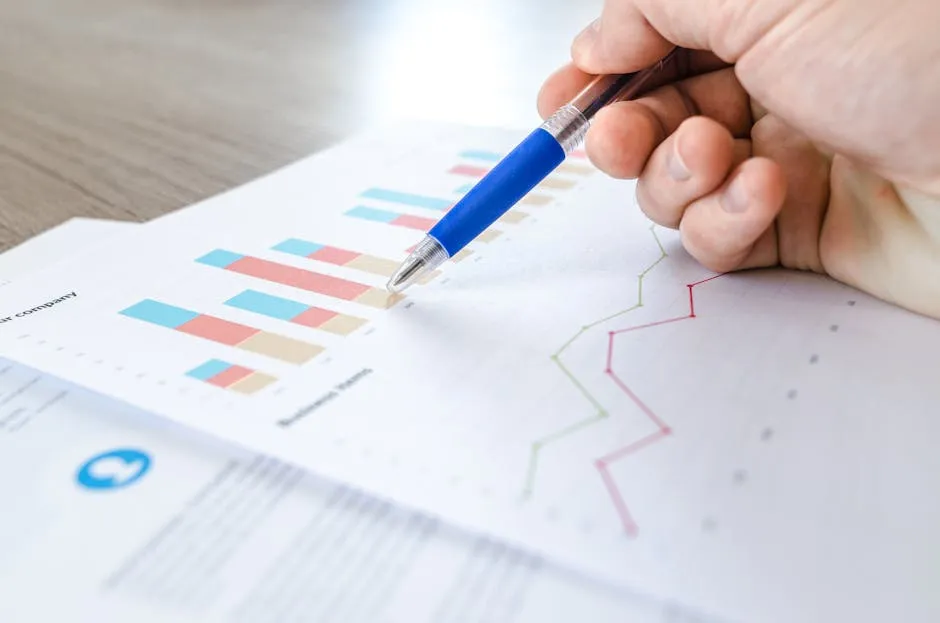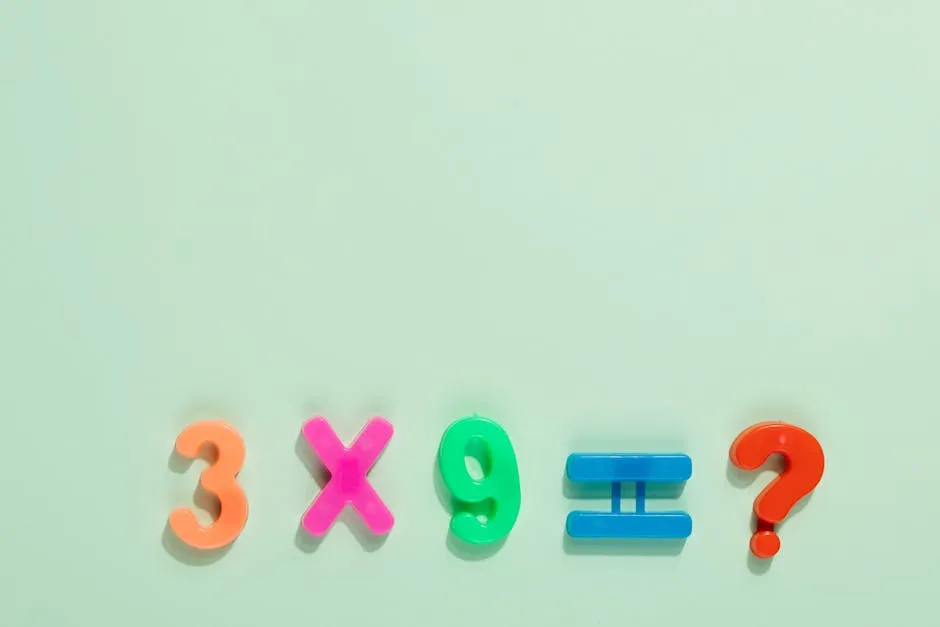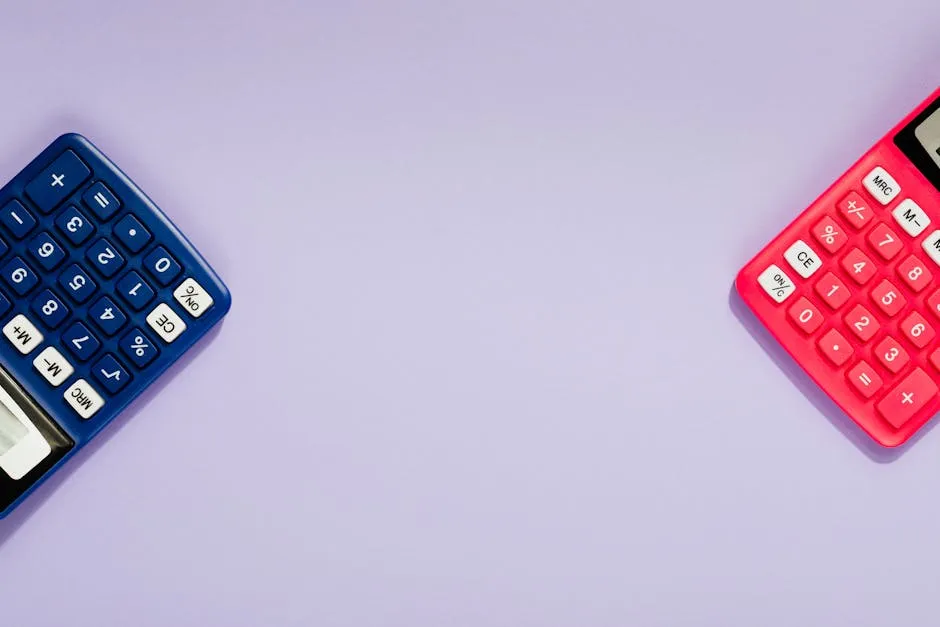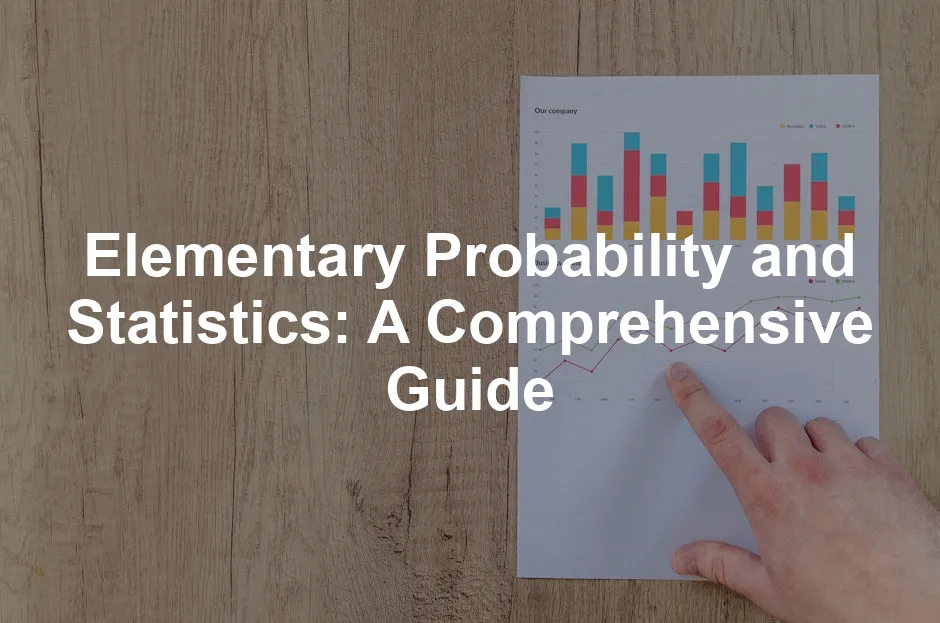Introduction
Elementary probability and statistics are foundational concepts that help us understand uncertainty and variability in data. Probability measures the likelihood of an event happening, while statistics involves collecting, analyzing, interpreting, and presenting data. Together, they empower us to make informed decisions in various fields.
Understanding these concepts is crucial in today’s data-driven world. In science, researchers rely on statistics to validate hypotheses and analyze experiments. In business, companies use probability to forecast trends, evaluate risks, and strategize marketing efforts. Even in our daily lives, we engage with these concepts—whether we’re calculating the odds of winning a game or interpreting weather forecasts.
In this article, readers can expect to learn the fundamental principles of probability, key rules that govern it, and the relationship between probability and statistics. We’ll cover essential topics, such as the different interpretations of probability, important probability rules like the addition and multiplication rules, and their applications in real-life scenarios. So, buckle up as we embark on this mathematical adventure filled with insights and practical examples!

To gain a deeper understanding of these concepts, check out this introduction to statistical learning with Python which discusses foundational elements including book length and content.
I. Understanding Probability
A. Basics of Probability
Probability quantifies uncertainty. It tells us how likely an event is to occur, ranging from 0 (impossible) to 1 (certain). The probability of an event A is expressed as P(A). The higher the probability, the more likely the event will happen.
There are three primary interpretations of probability:
- Frequentist Approach: This perspective relies on the frequency of events occurring in a large number of trials. For example, if we observe 52 boys born out of 100 singleton births, we can say the probability of a boy being born is 0.52.
- Model-Based Approach: Here, a model is used to determine probabilities. Take rolling a fair die; the probability of landing on ‘1’ is 1/6, as all six outcomes are equally likely.
- Opinion-Based Approach: This approach relies on personal judgment and past experiences. For instance, predicting the likelihood of your favorite sports team winning based on previous performance.
Each interpretation has its unique applications and can help us understand different scenarios in everyday life.

B. Key Probability Rules
1. Addition Rule
The addition rule helps us calculate the probability of at least one of two events occurring. For mutually exclusive events (events that cannot happen at the same time), the rule states:
P(A or B) = P(A) + P(B)
If events A and B can occur together, we adjust the formula:
P(A or B) = P(A) + P(B) – P(A and B)
For example, if event A is a person having blood group O and event B is having blood group B, these events are mutually exclusive. The probability of a person being either group O or B is simply P(A) + P(B).

2. Multiplication Rule
The multiplication rule calculates the probability of two (or more) events occurring together. For independent events, the rule states:
P(A and B) = P(A) × P(B)
However, for dependent events, we use conditional probability:
P(A and B) = P(A) × P(B | A)
For example, suppose event A is a person having diabetes, and event B is developing neuropathy. The probability of developing neuropathy given that a person has diabetes is represented as P(B | A).
Understanding these rules is crucial for navigating the world of probability. They provide the groundwork for more complex statistical concepts and help us assess risks and make predictions confidently.

C. Bayes’ Theorem
Bayes’ Theorem is a key concept in probability that helps us update our beliefs based on new evidence. Named after Thomas Bayes, this theorem is widely used in various fields, including medicine, finance, and machine learning.
At its core, Bayes’ Theorem provides a way to calculate the probability of an event based on prior knowledge of conditions related to that event. The formula is as follows:
P(B | A) = (P(A | B) × P(B)) / P(A)
Here, P(B | A) is the probability of event B occurring given that A is true. P(A | B) is the probability of event A given that B is true. P(B) is the initial probability of B, and P(A) is the probability of A.
Let’s break this down with a relatable example. Imagine you’re a doctor trying to diagnose a rare disease. You know the following:
- The disease affects 1 in 1,000 people, so P(B) = 0.001.
- If someone has the disease, there’s a 90% chance that they will test positive, so P(A | B) = 0.9.
- If someone does not have the disease, there’s a 5% chance they will still test positive (false positive), hence P(A | ¬B) = 0.05.
To find P(A), the total probability of testing positive, we can use the law of total probability:
P(A) = P(A | B) × P(B) + P(A | ¬B) × P(¬B)
Calculating P(A):
P(A) = (0.9 × 0.001) + (0.05 × 0.999) = 0.0009 + 0.04995 = 0.05085
Now, we can apply Bayes’ Theorem:
P(B | A) = (P(A | B) × P(B)) / P(A) = (0.9 × 0.001) / 0.05085 ≈ 0.0177
This result shows that even if a patient tests positive, there’s only a 1.77% chance they actually have the disease. This counterintuitive result highlights the importance of considering base rates when interpreting diagnostic tests.
Applications of Bayes’ Theorem are vast. In spam detection, for example, it helps filter out unwanted emails by calculating the probability of a message being spam based on its content. In finance, it aids in updating predictions about market trends as new data emerges.
In essence, Bayes’ Theorem equips us with a powerful tool to make better decisions based on the information we have, constantly adjusting our beliefs as we gather new evidence. Understanding this theorem not only enhances our statistical literacy but also sharpens our critical thinking skills in everyday situations.
3. Regression Analysis
Regression analysis is a powerful statistical method. Its primary purpose? To understand the relationship between variables. Imagine you want to predict your ice cream sales based on the temperature outside. Regression helps you quantify that connection!
At the heart of regression analysis lies linear regression. This approach assumes a straight-line relationship between two variables. Think of it as drawing a line through a scatterplot of data points. The line represents the best estimate of the dependent variable based on the independent variable.
The formula for a simple linear regression looks like this:
y = mx + b
Here, y is the predicted value (like ice cream sales), m is the slope of the line (how much sales increase with temperature), x is the independent variable (temperature), and b is the y-intercept (the starting point of sales when the temperature is zero).
Now, let’s talk applications! Linear regression is widely used across various fields. In healthcare, it helps predict patient outcomes based on treatment levels. For businesses, it’s invaluable for forecasting sales and understanding customer behavior. Educators can use it to analyze student performance against study hours.
In essence, regression analysis simplifies complex relationships. It provides clear insights, enabling better decision-making. So, whether you’re selling ice cream or running a healthcare facility, understanding regression can be a game-changer!

If you want to explore more about statistical inference and its applications in data science, check out statistical inference for estimation in data science, which is a comprehensive guide tailored for Colorado students.
B. Online Resources
Ready to dive deeper into elementary probability and statistics? Great! Here’s a treasure trove of online resources to enhance your learning and keep your brain buzzing.
Online Courses and Tutorials:
- Coursera: Offers fantastic courses on probability and statistics. Try “Probability and Statistics: To p or not to p” for an engaging introduction.
- edX: Check out “Introduction to Probability” by MIT. It’s like having your own math tutor, minus the awkward small talk.
- Khan Academy: This platform has a wealth of free resources, including video tutorials and practice exercises. Perfect for those who prefer a self-paced learning approach.
Textbooks:
- Elementary Statistics by Mario F. Triola. This book is a staple for beginners, blending clarity with thorough explanations. You can find more about it in this comprehensive guide on elementary statistics.
- Statistics by David Freedman, Robert Pisani, and Roger Purves. A great read that balances theory and practical application.
Useful Websites and Forums:
- Stack Exchange: This is the go-to site for asking questions and sharing knowledge. You’ll find a community of math enthusiasts eager to help!
- Cross Validated (Statistics Stack Exchange): Focused on statistics, this forum is perfect for diving into complex discussions and learning from experts in the field.
- R-bloggers: If you’re interested in statistical programming, this site offers a plethora of tutorials and articles on using R for data analysis.
These resources will catapult your understanding of probability and statistics to new heights. So, grab your laptop, a cozy seat, and get ready to learn!

FAQs
What is the difference between probability and statistics?
Probability is the study of uncertainty and the likelihood of events occurring. It provides a framework for predicting outcomes, often based on a theoretical model. Statistics, meanwhile, is about collecting, analyzing, and interpreting data. It uses probability to make inferences about larger populations based on sample data. In essence, probability helps us make predictions, while statistics helps us analyze the data we collect.
How can I improve my understanding of probability and statistics?
Improving your grasp of probability and statistics can be both fun and rewarding! Here are some tips: Practice regularly: Solve problems and conduct experiments to see how theory applies in real life. Utilize online resources: Platforms like Khan Academy and Coursera offer structured courses that can provide a solid foundation. Join study groups or forums: Engaging with others can provide new insights and help clarify concepts. Read books and articles: Dive into texts recommended earlier to deepen your understanding and see real-world applications.
Are there any real-life examples of probability and statistics in action?
Absolutely! Here are a few case studies: Weather forecasting: Meteorologists use statistical models to predict the likelihood of rain based on historical data. Healthcare: Clinical trials use statistics to determine the effectiveness of a new medication, analyzing outcomes in different patient groups. Sports analytics: Teams analyze player performance statistics to make informed decisions about trades and game strategies. These examples showcase how probability and statistics are not just abstract concepts but vital tools that influence many aspects of our lives!
What careers utilize probability and statistics?
Probability and statistics aren’t just for mathematicians in lab coats! These concepts play a vital role in various careers. Here’s a rundown of some fields where probability and statistics are the bread and butter. 1. Data Science Data scientists analyze complex data sets. They use statistical methods to extract insights and make predictions. Companies rely on these insights to inform decisions, optimize operations, and enhance customer experiences. A sprinkle of probability helps them to assess risks and uncertainties in their findings. 2. Healthcare In healthcare, professionals use statistics to evaluate treatment effectiveness and improve patient outcomes. Biostatisticians are essential in designing clinical trials. They analyze data to determine if new drugs or treatments are effective. Plus, epidemiologists use probability to model disease spread, helping to predict outbreaks and implement public health strategies. 3. Finance Finance experts, such as analysts and actuaries, leverage statistics to assess risks and forecast market trends. They analyze historical data to make investment decisions and ensure the financial health of organizations. Probability models help them understand potential future events, whether that’s predicting stock prices or assessing insurance risks. 4. Marketing Marketing professionals use statistical analysis to measure campaign effectiveness. They track consumer behavior, preferences, and trends using surveys and data analytics. By understanding the probability of certain consumer actions, marketers can tailor strategies to increase engagement and conversions. 5. Sports Analytics In the world of sports, analysts utilize statistics to evaluate player performance and team strategies. They analyze game data to optimize team performance and inform coaching decisions. With probability, they can predict outcomes of games and assess the impact of player injuries. 6. Education Educators and administrators use statistics to analyze student performance and outcomes. They assess test scores and other data to improve teaching methods and curricula. Educational statisticians help develop standardized tests, ensuring fairness and reliability in assessing student achievement. 7. Government and Public Policy Statisticians in government agencies analyze demographic data to inform policy decisions. They conduct surveys and studies to understand population trends, health outcomes, and social issues. Probability aids in risk assessment, helping policymakers make informed decisions for the public good. 8. Manufacturing and Quality Control In manufacturing, statistical methods are crucial for quality control. Engineers and quality assurance specialists use probability to predict product failures and ensure standards are met. They analyze production processes to minimize defects and improve efficiency. 9. Insurance Insurance companies depend heavily on probability and statistics. Actuaries evaluate risks and set premium rates based on data analysis. They use statistical models to forecast future claims and ensure the company remains financially viable. 10. Social Sciences Researchers in fields like sociology and psychology rely on statistics to analyze study results. They assess survey data to understand human behavior and societal trends. Probability helps them generalize findings from samples to larger populations, making their conclusions more robust. In conclusion, probability and statistics form the backbone of countless careers. Whether you’re crunching numbers in finance or analyzing data in healthcare, these skills are in high demand. So, if you’re considering a career where numbers matter, embracing these concepts could open doors to many exciting opportunities!
Please let us know what you think about our content by leaving a comment down below!
Thank you for reading till here 🙂

And before you go, if you’re looking to crunch numbers like a pro, consider investing in a TI-84 Plus CE Graphing Calculator. It’s not just a calculator; it’s your trusty sidekick in the world of stats and probability!
All images from Pexels




